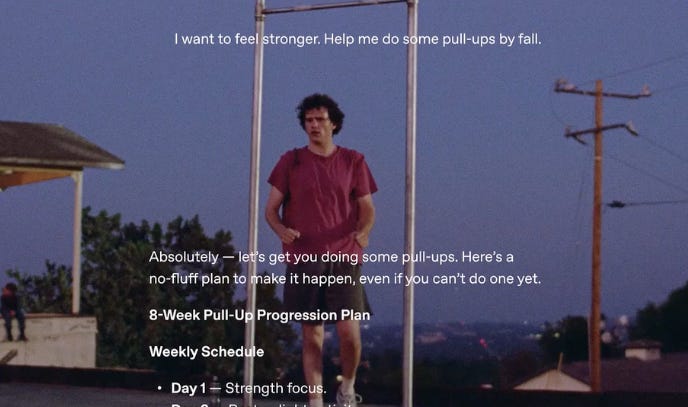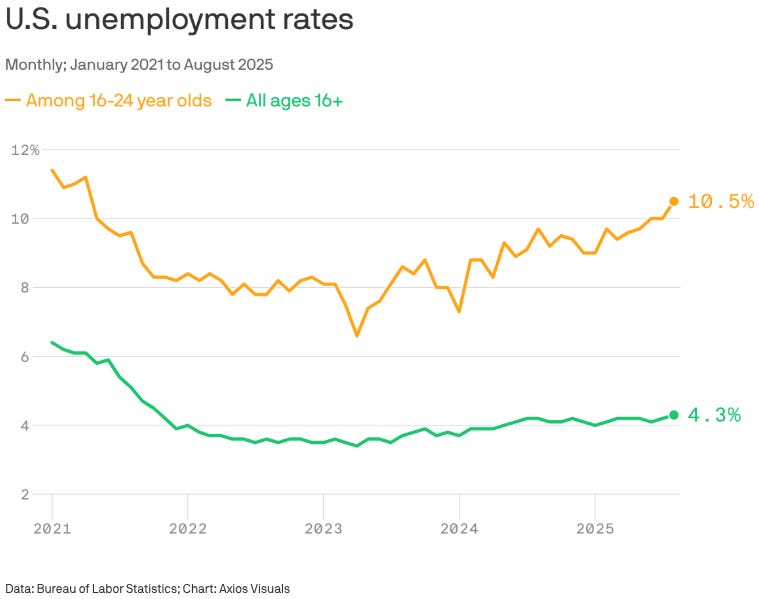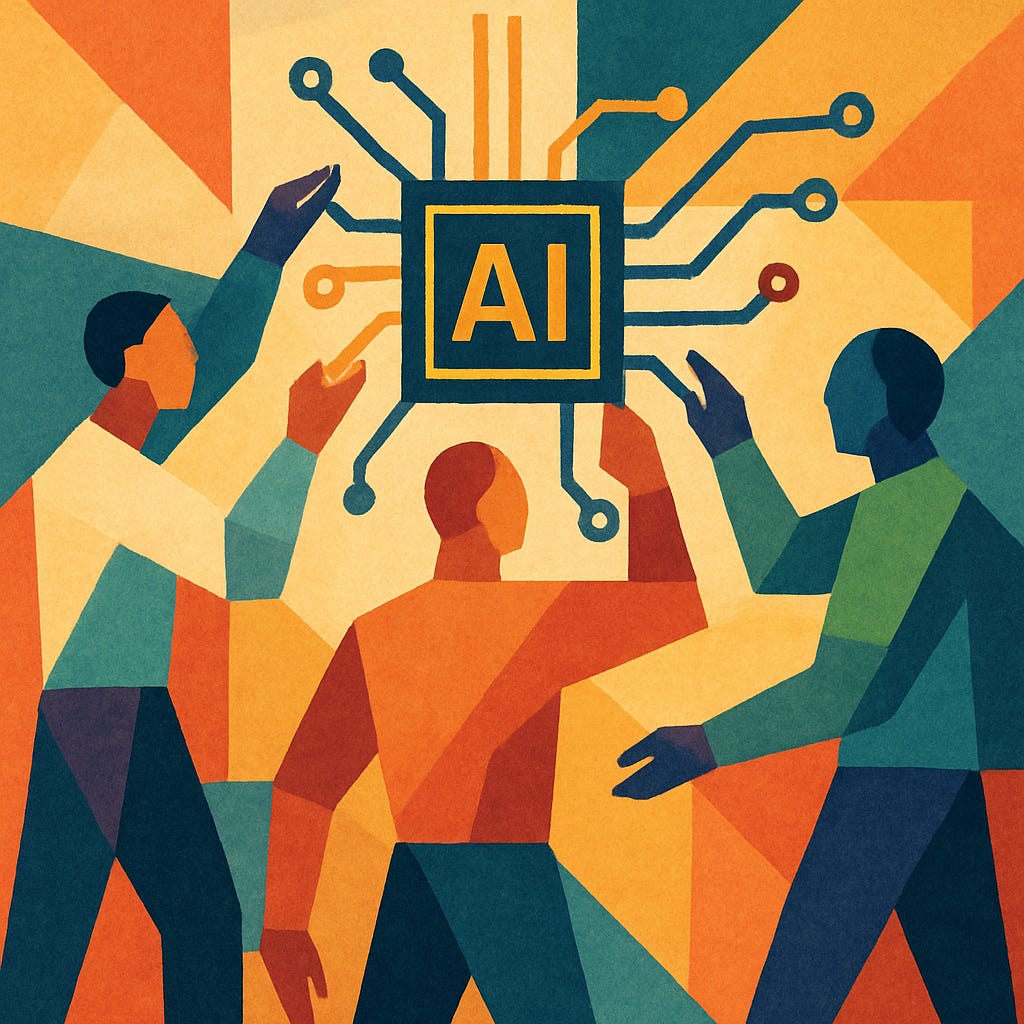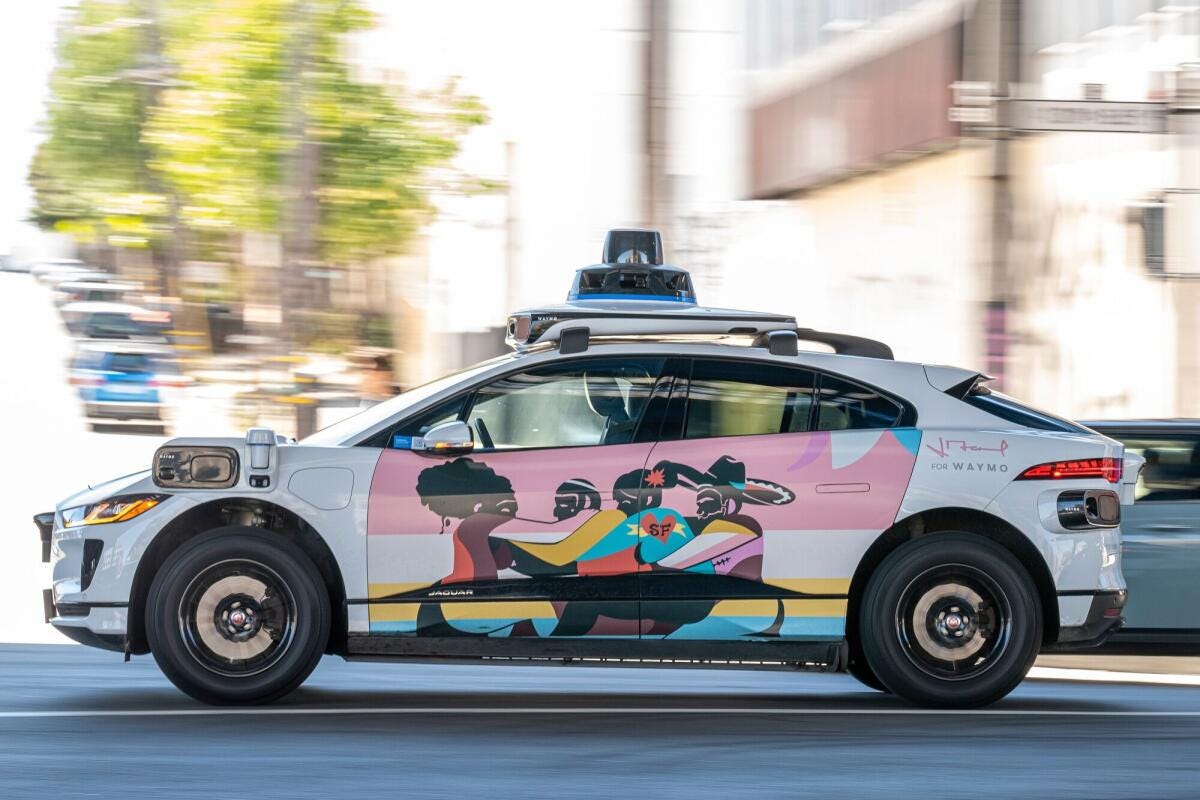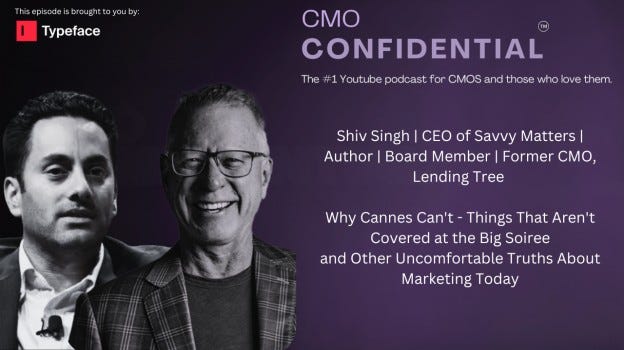Time to Thank Waymo?
A Marker for What’s Coming Next
Before diving into the main article, I want to share a few quick reflections on recent AI headlines that have caught my attention. I also discussed some of these themes as a guest on Mike Linton’s CMO Confidential podcast (the episode has already surpassed 26,000 views on YouTube). As I spend much of my time advising C-suite leaders navigating this space, I’ve found these stories to offer valuable insight into where things are heading.
OpenAI’s new analysis of ChatGPT usage shows the tool evolving from novelty to infrastructure. Workers now rely on it daily to summarize research, draft communications, brainstorm ideas, and analyze data. Adoption extends beyond tech roles, with professionals in law, healthcare, and education integrating it into their work. The findings signal a strategic shift: generative AI is becoming an embedded productivity layer, prompting organizations to rethink training, governance, and how work gets done.
Dentsu Creative’s 2025 Global CMO Report highlights a paradox: AI is central to marketing, yet 87% of CMOs believe human creativity and empathy are more critical than ever. While AI is used daily, marketers caution against a “sea of sameness” or AI slop from over-optimization. The focus is shifting to capturing “share of culture” through creators, communities, and entertainment. The message is that AI is an amplifier, not a replacement for creativity. Brands that succeed will combine AI efficiency with human storytelling, imagination, and cultural trust.
Anthropic Claude’s “Keep Thinking” campaign, its first brand initiative, marks a shift in how AI is marketed. Rather than emphasizing speed or automation, Claude is positioned as a safe, thoughtful partner that extends human reasoning. The campaign targets concerns about reckless AI, underscoring Anthropic’s focus on alignment and safety. As competition intensifies, AI firms are differentiating through brand values, trust, restraint, and cultural positioning, alongside technical capability. It was only a matter of time before they moved in this direction.
In contrast to Claude’s emphasis on productivity, safety, and restraint, OpenAI’s new ChatGPT campaign highlights everyday creativity and personal growth, while more directly challenging Google Search. Through cinematic, slice-of-life ads, the assistant is shown quietly helping users cook, plan, or explore, positioning AI as a natural part of daily life. The tone is warm and accessible, normalizing AI use through relatable moments rather than abstract assurances. It marks a clear shift from their Super Bowl campaign, which I felt lacked resonance, and moves in the direction I had suggested at the time.
Workday’s acquisition of knowledge platform Sana, and its broader AI agent strategy, signal a shift in enterprise software beyond back-office functions. These agents surface insights, automate workflows, and manage communication autonomously. While rooted in HR and finance, the same type of technology infrastructure will soon impact marketing - from content production to real-time personalization. The takeaway for marketers: enterprise AI will quietly but quickly redefine how campaigns are planned, executed, and measured.
These headlines reflect the AI landscape’s volatility. But beyond the news cycle, the deeper shift lies in how AI is reshaping work, beginning with the roles and career pathways in marketing and beyond.
The AI Workplace: Who Wins, Who Loses
The next time you exit a Waymo vehicle, consider what it represents, not just a safer ride, but a signal: intelligent systems are moving beyond support roles to taking full ownership of core operations. You might even consider saying thank you to the vehicle for the service it has provided! This AI shift to full ownership of core operations is no longer speculative; it is already reshaping how corporations think about talent, operating models, and value creation across functions and geographies.
While many organizations still frame AI primarily as an efficiency lever, the emerging reality is more significant. Agentic AI and related technologies are beginning to replace more than just support work. Entry-level roles are diminishing. Middle management is under pressure; just look at recent changes at Google to appreciate the magnitude of the change. Even core decision-making tasks are increasingly being absorbed by AI systems.
This shift is particularly acute in marketing. Long considered a function reliant on creativity, storytelling, and digital execution, marketing teams often resist the notion that their work can be automated. That assumption is increasingly difficult to sustain with advances in generative AI.
But if there was any sign, that dramatic change is afoot, it comes from Walmart, the largest private employer in America. Friday’s Wall Street Journal has Walmart CEO Doug McMillon articulating the hard truth: “AI is going to change literally every job.” Inside Walmart, AI’s impact is now a recurring theme in high-level planning meetings, with leadership tracking which roles are being phased out, where new positions are emerging, and what training will be required. Their workforce size may remain stable, but the composition is changing rapidly.
AI as a system-wide redesign, not a toolset
In many marketing functions, AI is still deployed at the margins and is used to only accelerate ad production, automate low-stakes tasks, or test performance optimizations. These initiatives can create a false sense of stability, leading leaders to assume that core functional structures will remain intact.
That assumption is flawed. Marketing cannot merely integrate AI tools, it needs to evolve into an AI-native discipline to benefit from the growth aspirations and the operational efficiencies that CEOs and their boards are demanding. Creativity, differentiation, and brand purpose will always matter, but they are no longer the only engines of performance. Instead, they are beginning to serve as high-value inputs into AI-enabled systems.
To keep pace, marketing functions must undergo comprehensive reinvention:
Task design, workflows, and decision-making should be rebuilt with AI at the core. The objective is not to keep the current ways of working running but to reengineer the underlying operating model with an AI-Native mindset. Much of my current client advisory work already focuses on this shift.
Martech infrastructure should transition from simple automation to intelligent orchestration. It must be evaluated through an AI-native lens, focusing on adaptability, integration and autonomous decision making. There’s no point in fighting the trend lines, embrace all that AI can be and push your teams.
Teams should shift from campaign execution to system architecture, designing AI-enabled systems that learn, adapt, and optimize continuously. In this model, AI is a collaborative partner embedded across the function. Human-in-the-loop remains critical, perhaps more than ever, but don’t assume only humans belong in the loop.
This transition mirrors workforce shifts elsewhere in corporations. Walmart has established new roles such as “agent builders” to support merchants with AI tooling, even as other positions, particularly in back-of-store operations, are phased out. The company expects more customer-facing roles to persist, but even these are evolving alongside AI.
So here’s the question for you, how many agent builders do you have in your marketing function? My guess, very few if any. And that’s a problem.
But AI’s structural impact extends even beyond that. It is leading organizations to ask key questions:
Which roles should be automated versus augmented with AI?
How should AI roles interface with one another across the enterprise?
What defines leadership and teamwork in an AI-enabled environment?
In more and more companies, executives need to actively identify emerging leaders who can guide their teams through this transformation. Across companies, internal “heat maps” are being used to evaluate which roles are at risk, which need redesign, and which require new capabilities. Are you doing the same?
Crucially, organizations are beginning to recognize that resilience, the ability to adapt to change, is becoming a core performance metric. As was discussed in that same Wall Street Journal article, resilience is now one of the clearest predictors of success in a rapidly evolving operating context.
Implications for marketing leaders
Waymo demonstrates that vehicles no longer require drivers. Meta is hinting that marketing may no longer require human intermediaries. Walmart is signaling that all jobs will be reshaped, even if the workforce size remains constant. In this context, marketing leaders must move beyond experimentation and simple tool integration.
The path forward requires:
Challenging legacy assumptions about the centrality of human execution
Rebuilding workflows from the ground up with AI as a core capability
Preparing for when value comes from orchestration over execution
The future of marketing will not be defined by brands, creativity or campaigns alone, but by the ability to build, manage, and adapt AI systems at scale as well. Creativity and human insight remain essential, but they must now operate within architectures designed for continuous, AI-driven transformation. Every marketing function will need to become AI-Native quickly.
7 Structural Changes Already Underway
Marketing is evolving in ways that are foundational, not incremental. Among the earliest shifts that I have been advising clients on include:
Expansion of Brand Strategy
Effective strategy now includes aligning AI models with brand tone, values, and use cases, redefining what it means to manage a brand.Shift in Insight Generation
Machine learning with generative AI is revamping the insights process—synthetic panels, synthetic personas, and even synthetic briefs are going mainstream.Workflow Redesign for AI-Native Systems
Marketing operations must be reengineered to support AI-native workflows prioritizing adaptability, real-time feedback loops, and system-wide orchestration.Creative Production at Scale
Generative AI is dramatically reducing the cost and time required to produce creative assets, replacing multi-week agency cycles with near-instant creation.Autonomous Personalization
AI agents are increasingly and independently running marketing campaigns, reducing the need for manual targeting, creative updates, or spend optimization.Search to Answer Transition
As search behavior becomes more conversational, brand visibility depends on optimization for AI-driven answer engines, not traditional SEO.AI-Native Talent Development
Teams must be educated and equipped to think and operate in AI-Native environments, shifting from task execution to oversight, orchestration, and strategic stewardship.
Thanking Waymo is not simply a gesture of faux courtesy. It is a recognition that the AI future is no longer hypothetical, it is operational. Marketing leaders face a strategic choice: maintain legacy structures or adapt to a new AI-Native model defined by AI collaboration.
Walmart and Meta have already articulated the direction. While transitional messages may offer comfort, the strategic imperative is clear. The future of careers, business models, and creative influence will increasingly depend on how effectively leaders engage with AI, not whether they can resist it.
Where I’ve been
It’s been an intense month balancing consulting commitments with speaking engagements on marketing transformation and AI’s role in the enterprise. I recently joined Mike Linton, former CMO of Farmers Insurance, eBay, and Best Buy, on his hugely popular podcast CMO Confidential for a candid conversation about what most people won’t say out loud and what marketers need to do next. The podcast interview has already gotten over 26,000 views on Youtube alone.
In the coming months, I’ll be speaking at:
National Association of Corporate Directors Annual Conference – Speaking on agentic AI and its implications for board members (third appearance).
DPAA Global Summit – Mainstage conversation on the future of Agentic AI in the advertising industry before 900+ attendees.
AI Trailblazers Winter Summit – Co-hosting on December 4 in New York; assembling an exceptional lineup of speakers. Contact me if you’re interested in partnering.
Corporate Events – Delivering keynotes and multi-part educational workshops on AI in the workplace for clients across the country.
What I’m reading
Amazon debuts AI ‘creative partner’ for campaigns (Marketing Dive)
What I’ve written lately
AI’s Fork in the Road for Marketers (September 2025)
Is Search Really Going Away (August 2025)
The Myth of Creative Immunity (July 2025)
The Silent Shift in Marketing Leadership (June 2025)
AI Trailblazers Summit Highlights (June 2025)


